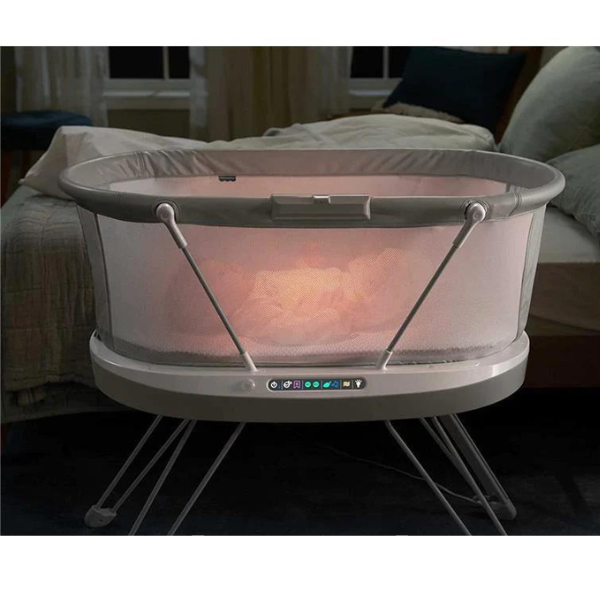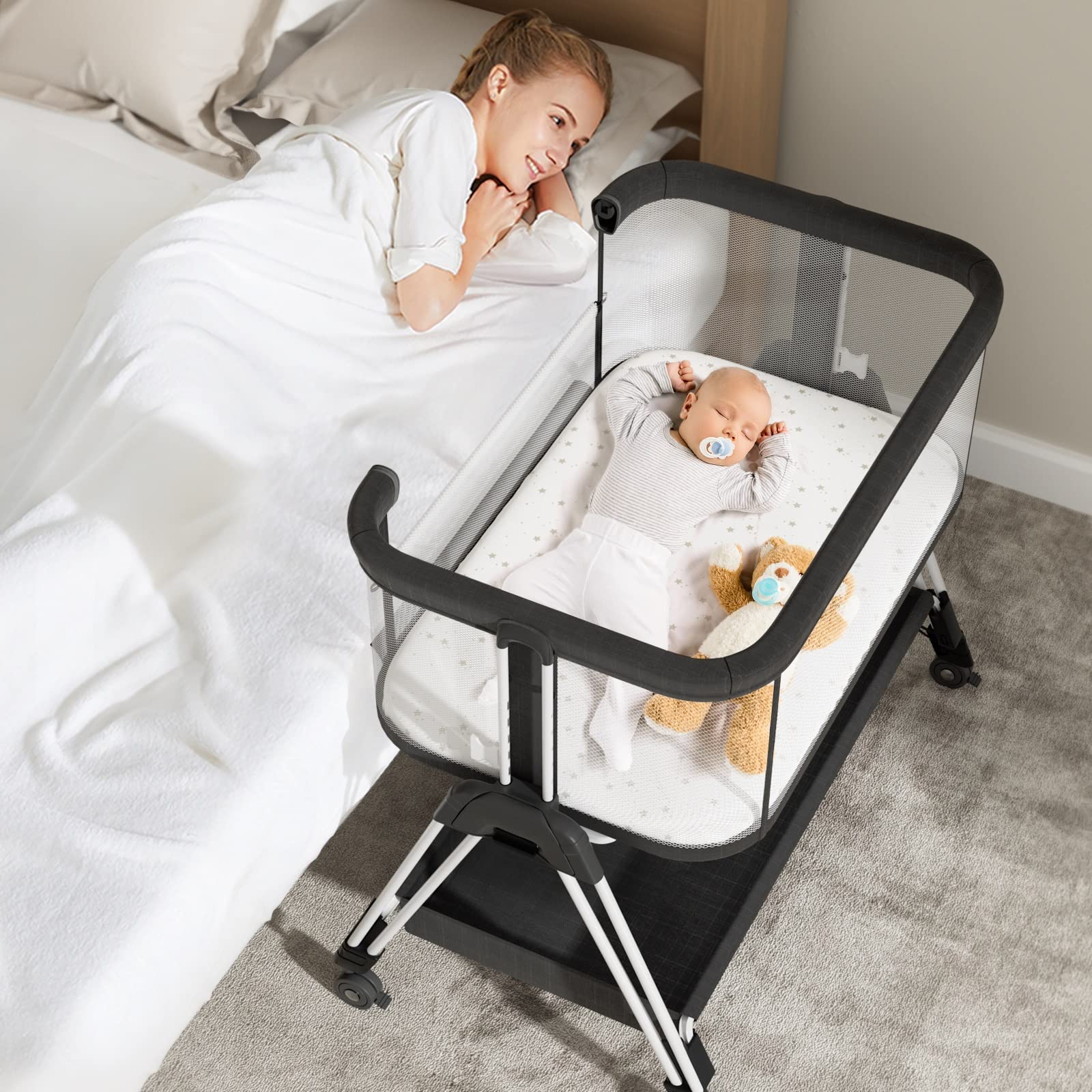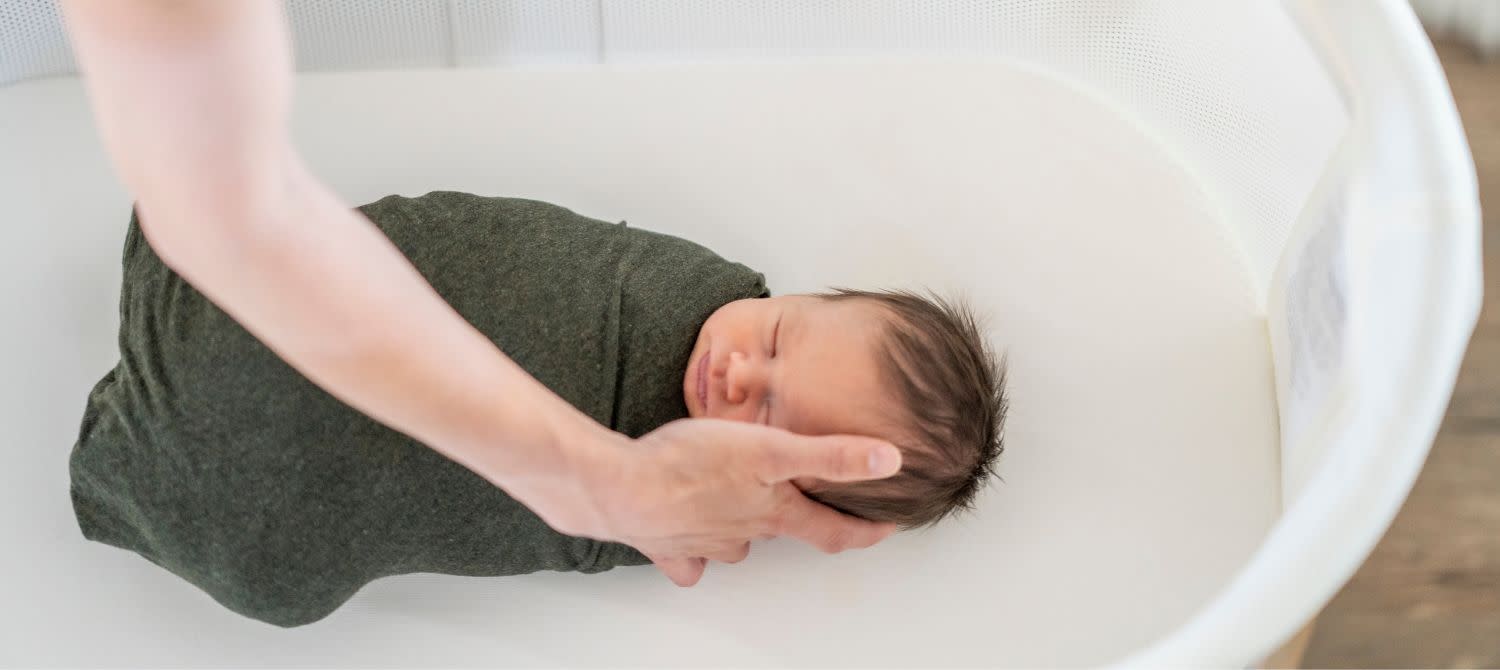Introduction: The Importance of Safe Sleep Practices for Infants
The first months of a baby’s life are marked by rapid growth and development, making sleep an essential component for their overall health and well-being. As new parents navigate the world of infant care, ensuring a safe sleep environment is paramount. One common concern revolves around the use of bassinets and the potential for babies to roll over while sleeping. This article delves into the safety considerations of bassinets, explores the rolling milestone, and provides guidance on how to create a secure sleep space for your little one.
Understanding the Bassinet: A Traditional Choice for Newborns
Bassinets have long been favored by parents for their compact size, portability, and the sense of closeness they offer between parent and child. Designed specifically for infants, bassinets typically feature lower sides than cribs, allowing easier access to the baby. However, with the natural progression of a baby’s motor skills, concerns arise about the safety of bassinets once the baby starts to roll, kick, or move more actively during sleep.

The Rolling Milestone: When Do Babies Start Rolling Over?
The ability to roll over is a significant developmental milestone that usually occurs between 4 to 6 months of age. This newfound mobility marks an exciting phase but also introduces new safety challenges. It’s crucial for parents to recognize that each baby develops at their own pace; therefore, some might start rolling earlier or later than this general timeline. Understanding when your baby is approaching or has achieved this milestone is vital for adjusting their sleep environment accordingly.
Safety Considerations for Bassinets and Rolling Babies
Sides and Stability: A primary concern with bassinets and rolling babies is the risk of the baby rolling out or getting stuck between the sides. Ensure the bassinet you choose has sturdy, secure sides that are high enough to prevent these occurrences. Look for models with mesh sides for better breathability and visibility.
Mattress Firmness and Fit: The mattress should fit snugly within the bassinet without leaving gaps where a baby could become wedged. Additionally, it should be firm to reduce the risk of suffocation or sudden infant death syndrome (SIDS).
Clearance and Hazards: Keep the bassinet away from cords, window blinds, or any hanging objects that could pose a strangulation hazard. Also, ensure there’s no space for the baby to reach out and grab anything that could topple over onto them.

Transitioning from Bassinet to Crib: Recognizing the Right Time
As your baby becomes more mobile, particularly once they start rolling over consistently, it may be time to consider transitioning them to a crib. Cribs, with their higher sides and larger sleeping surface, provide a safer environment for active sleepers. The American Academy of Pediatrics recommends moving your baby to a crib when they are around 3 to 5 months old or as soon as they begin showing signs of being able to push up on their hands and knees.
Creating a Safe Sleep Environment Beyond the Bassinet
Regardless of whether your baby is in a bassinet or a crib, adhering to safe sleep guidelines is crucial. These include placing the baby on their back to sleep, using a firm sleep surface, keeping soft objects, toys, and loose bedding out of the sleep area, and maintaining a smoke-free environment.
Monitoring Your Baby’s Sleep
While it’s natural for parents to worry about their baby’s every move during sleep, technology can offer some peace of mind. Devices like baby monitors with video capabilities allow you to keep an eye on your little one without constant physical checks, which can disrupt their sleep patterns.

Addressing Common Misconceptions About Sleep Safety
In the quest to provide the safest sleep environment for infants, parents often encounter a myriad of conflicting advice and misinformation. One such misconception revolves around the belief that positioning devices, such as sleep positioners or wedges, can prevent SIDS or rollover incidents. However, the American Academy of Pediatrics cautions against using these products, as they are not necessary and may even increase the risk of suffocation. It’s crucial to rely on evidence-based practices and avoid introducing items into the bassinet or crib that haven’t been proven safe.
The Role of Tummy Time in Safe Sleep Development
Tummy time is an essential activity that not only aids in preventing flat head syndrome but also strengthens the neck, shoulder, and trunk muscles, facilitating the baby’s ability to roll over and eventually meet other motor milestones. Regular tummy time sessions, supervised by an adult, can help babies develop the muscle strength needed to maneuver safely during sleep. It’s recommended to start tummy time from the first days of life for short periods and gradually increase duration as the baby tolerates.

Sleepwear and Temperature Regulation
Another aspect of safe sleep that sometimes goes overlooked is appropriate sleepwear and room temperature. Dressing your baby in lightweight, breathable clothing and ensuring the room temperature is kept at a comfortable level (ideally between 68°F to 72°F or 20°C to 22°C) can help reduce the risk of overheating, a known risk factor for SIDS. Avoid using hats or additional blankets inside the bassinet or crib unless medically advised, as these can interfere with temperature regulation.
Promoting Safe Co-Sleeping Practices
For families who choose to co-sleep or practice room-sharing, it’s imperative to follow strict guidelines to minimize risks. The AAP recommends room-sharing without bed-sharing, meaning the baby sleeps in a separate crib or bassinet within the parents’ bedroom for at least the first six months, and ideally up to a year. Bed-sharing increases the risk of suffocation, entrapment, and SIDS. If room-sharing, ensure the baby’s sleep surface is free from soft bedding, pillows, and adult bedding that could pose hazards.

Conclusion: Prioritizing Safety in Every Stage of Sleep
In the realm of infant care, ensuring safe sleep practices is a continuous effort that evolves with your baby’s growth. While bassinets can provide a cozy and practical sleeping arrangement for newborns, recognizing the signs of your baby’s advancing motor skills and adjusting their sleeping environment accordingly is vital. By staying vigilant, following expert recommendations, and creating a secure sleep space, parents can foster healthy sleep habits that support their baby’s development and give themselves much-needed reassurance. Remember, the key to safe sleep lies in preparation, awareness, and timely transitions as your baby grows.
